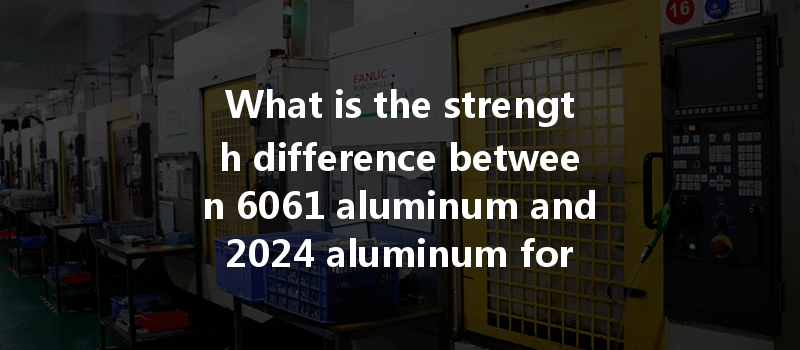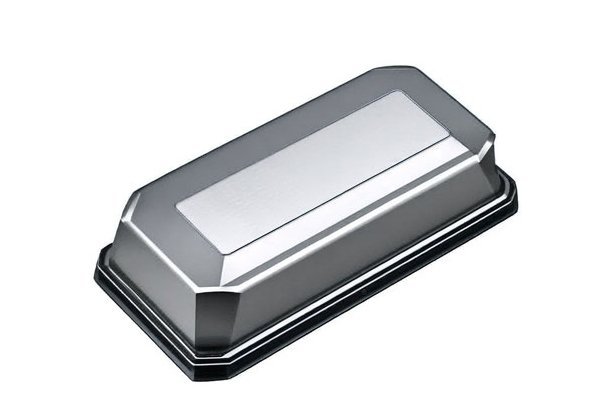Did you know that aluminum is one of the most commonly used metals in the world, accounting for approximately 8% of the Earth’s crust? Lightweight, non-corrosive, and highly versatile, aluminum is readily engineered into numerous forms for various applications and industries. However, not all aluminum alloys are created equal, which leads us to a vital question for manufacturers: What is the strength difference between 6061 aluminum and 2024 aluminum when it comes to CNC turning projects?
In this blog, we will explore the properties, strengths, and weaknesses of both alloys, analyzing them in-depth concerning CNC turning applications. By the end, you will have a clear understanding of how to choose the right aluminum alloy for your specific needs, particularly in CNC manufacturing.
The Basics: What are Aluminum Alloys?
Before diving into the specifics of 6061 and 2024 aluminum, it is essential to understand what aluminum alloys are. Generally, aluminum alloys are categorized into two groups: wrought and cast.
6061 and 2024 aluminum belong to the wrought alloy category, composed mainly of aluminum (the base metal) with various alloying elements enhancing specific characteristics.
Overview of 6061 Aluminum
6061 Aluminum is one of the most versatile and widely used aluminum alloys. It contains silicon and magnesium as its primary alloying elements and boasts a medium to high strength ratio. Here are some key properties:
Overview of 2024 Aluminum
In contrast, 2024 Aluminum is a heat-treatable alloy primarily characterized by its high strength and excellent fatigue resistance. Copper is the main alloying element, and it has its own set of unique properties:
Strength Comparison: 6061 vs. 2024
The fundamental difference between 6061 and 2024 aluminum lies in their strength characteristics and how they perform under different mechanical loads.
Yield and Ultimate Tensile Strengths
Fatigue Resistance
For applications subject to repetitive stress, fatigue resistance is crucial because the material can fail at much lower stress levels than its ultimate tensile strength. 2024 aluminum has superior fatigue resistance due to its alloying elements and heat treatment options, making it ideal for cyclic loading in aerospace components.
Temperature Resistance
Both alloys can withstand a range of operating temperatures, but 2024 aluminum retains its strength better at elevated temperatures. This characteristic can be a decisive factor when choosing between the two alloys based on the operational environment of the components being manufactured.
Applications and Recommended Use Cases
When to Use 6061 Aluminum

When to Use 2024 Aluminum
CNC Machining Considerations
Machining 6061 Aluminum
Given its excellent machinability, 6061 aluminum is a favorite among CNC machinists. Here are some best practices:
Machining 2024 Aluminum
While more challenging to machine than 6061, success in CNC machining of 2024 aluminum is not impossible. Here’s how to approach it:
Summary of Key Differences
| Property | 6061 Aluminum | 2024 Aluminum |
|—————————|———————————–|————————————|
| Yield Strength | 40,000 psi | 50,000 psi |
| Ultimate Tensile Strength | 42,000 psi | 70,000 psi |
| Corrosion Resistance | Excellent | Good (may require treatment) |
| Weldability | Highly weldable | Poor weldability |
| Machinability | Excellent | Fair to poor |
| Common Applications | Marine, automotive, structures | Aerospace, military |
Understanding the differences between 6061 and 2024 alloys is crucial for making informed decisions in CNC turning projects. Each alloy possesses unique strengths and weaknesses that fit different applications. 6061 is ideal for general use due to its corrosion resistance and machinability, while 2024 is the go-to choice for high-strength applications, particularly in the aerospace sector.
Ultimately, comparing the two alloys in terms of mechanical strength, machinability, and environmental resistance will help determine the best choice for your specific application. Consideration for greater operating conditions, cost, and production methods is also essential.
By understanding the nuances of these two aluminum alloys, manufacturers can optimize their processes, reduce production costs, and produce high-quality components that meet industry standards. Maintaining awareness of the latest advancements in aluminum technology and machining techniques will ensure that your business remains competitive.
This blog ultimately serves as a crucial guide for companies and engineers involved in CNC machining, helping them make informed and strategic choices that align with their project requirements. Exploring these technical aspects is worth your time and pursuit; it lays the groundwork for substantial business improvements in the competitive landscape of CNC machining and aluminum processing.






